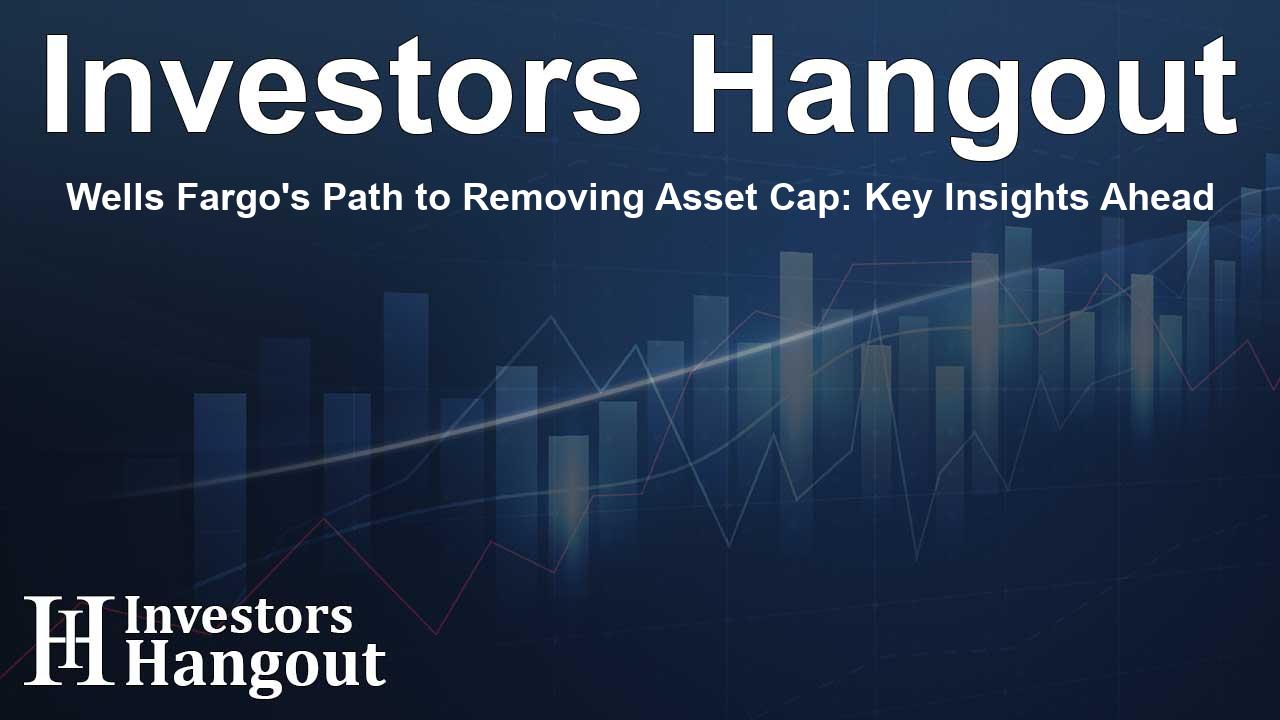Wells Fargo's Path to Removing Asset Cap: Key Insights Ahead

Wells Fargo's Journey Toward Lifting the Asset Cap
Wells Fargo (NYSE: WFC) is reportedly making significant strides towards removing the $1.95 trillion asset cap, a consequence of their past misconduct involving the creation of fake accounts. This development comes as a breath of fresh air for the banking giant, as it may see the cap lifted as early as the first half of 2025, marking a pivotal recovery phase for the bank.
Understanding the Regulatory Landscape
Initially imposed by the Federal Reserve in 2018, this asset cap was one of the toughest sanctions placed on Wells Fargo, aimed to motivate the bank to rectify issues in governance and risk management that emerged during its scandal. The removal of this cap could symbolize not only substantial progress by the bank but also a restoration of their competitiveness within the banking sector. While Wells Fargo has taken important steps to improve its practices, the final decision hinges on a vote by the Fed's board of governors.
Market Reactions and Implications
As news of the potential lifting of this cap circulated, Wells Fargo's shares experienced a notable rise, gaining over 2% in premarket trading. This response reflects investor optimism regarding the bank's future and its ability to restore its standing in the market. However, this lifting isn't merely about regaining lost ground; it's also about reclaiming customer trust and positioning the bank for future growth amid fierce competition from peers like JPMorgan Chase (NYSE: JPM) and Bank of America Corp (NYSE: BAC), who have significantly expanded their assets in recent years.
The Ongoing Recovery Efforts
In recent months, reports have indicated that Wells Fargo is benefiting from a thorough third-party review submitted to the Federal Reserve, showcasing their commitment to overhauling their risk management and controls. This is a crucial part of their strategy to alleviate regulatory burdens and re-establish themselves as a reliable institution. Furthermore, they have successfully resolved six consent orders since Charlie Scharf took over as CEO, though eight remain open.
Political Influences on Financial Regulation
The political climate may further influence the regulatory landscape for Wells Fargo. With the election of Donald Trump, a shift towards reduced regulatory oversight for banks is anticipated. This potential easing of regulations, particularly regarding capital requirements, could further benefit Wells Fargo as it seeks to regain its footing in the financial sector.
Challenges Ahead for Wells Fargo
Despite visible progress, Wells Fargo continues to face scrutiny regarding its past behavior, especially from public figures like Senator Elizabeth Warren. She has advocated for the maintenance of the asset cap until the bank can demonstrate complete resolution of its risk and compliance shortcomings. Such pressures reflect the broader expectations of accountability and reform in the banking industry.
The Competitive Landscape
As Wells Fargo navigates its recovery, it must contend with an increasingly competitive banking environment. Rivals like JPMorgan Chase have seen their assets surge by over $1.5 trillion since the cap was enforced, while other institutions like PNC Financial (NYSE: PNC) have seen significant growth as well. This dynamic presents challenges for Wells Fargo, as they aim to catch up without the restrictions that have hampered their growth.
Looking Forward
The looming possibility of lifting the asset cap represents a critical milestone for Wells Fargo. With ongoing regulatory pressures and an evolving marketplace, the bank's ability to adapt and thrive is vital not only for its shareholders but also for the broader financial landscape. As the situation unfolds, all eyes will be on Wells Fargo to see how it will leverage its hard-won reforms and regulatory clearance to pave the way forward.
Frequently Asked Questions
What is the asset cap imposed on Wells Fargo?
The asset cap is a regulatory restriction that limits the total assets Wells Fargo can hold, instituted after the bank's fake accounts scandal.
When is the asset cap expected to be lifted?
Reports suggest that the asset cap may be lifted as early as the first half of 2025, pending a decision from the Federal Reserve.
What have been the consequences of the asset cap for Wells Fargo?
The asset cap has limited Wells Fargo's growth and competitiveness, especially compared to other banks that have expanded significantly during this period.
How has Wells Fargo responded to regulatory pressures?
The bank has taken steps to improve its governance and risk management processes and has recently submitted a third-party review to the Federal Reserve.
What political changes could affect Wells Fargo's regulatory environment?
With the potential shift in administration policies, there may be a reduction in regulatory burdens on banks, which could benefit Wells Fargo in the long run.
About Investors Hangout
Investors Hangout is a leading online stock forum for financial discussion and learning, offering a wide range of free tools and resources. It draws in traders of all levels, who exchange market knowledge, investigate trading tactics, and keep an eye on industry developments in real time. Featuring financial articles, stock message boards, quotes, charts, company profiles, and live news updates. Through cooperative learning and a wealth of informational resources, it helps users from novices creating their first portfolios to experts honing their techniques. Join Investors Hangout today: https://investorshangout.com/
Disclaimer: The content of this article is solely for general informational purposes only; it does not represent legal, financial, or investment advice. Investors Hangout does not offer financial advice; the author is not a licensed financial advisor. Consult a qualified advisor before making any financial or investment decisions based on this article. The author's interpretation of publicly available data shapes the opinions presented here; as a result, they should not be taken as advice to purchase, sell, or hold any securities mentioned or any other investments. The author does not guarantee the accuracy, completeness, or timeliness of any material, providing it "as is." Information and market conditions may change; past performance is not indicative of future outcomes. If any of the material offered here is inaccurate, please contact us for corrections.